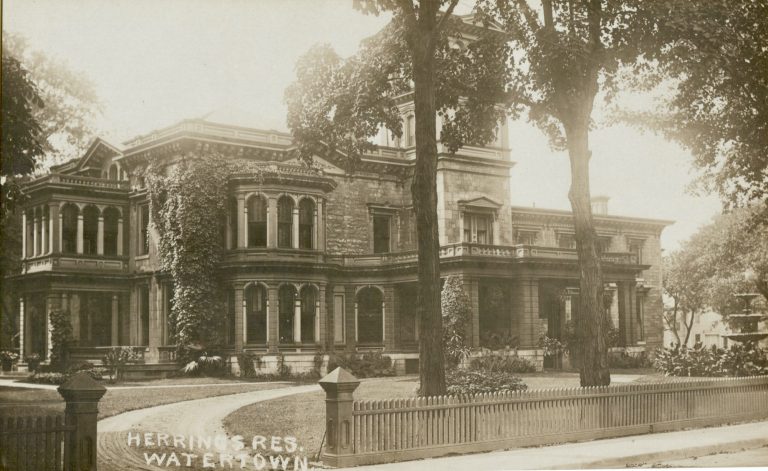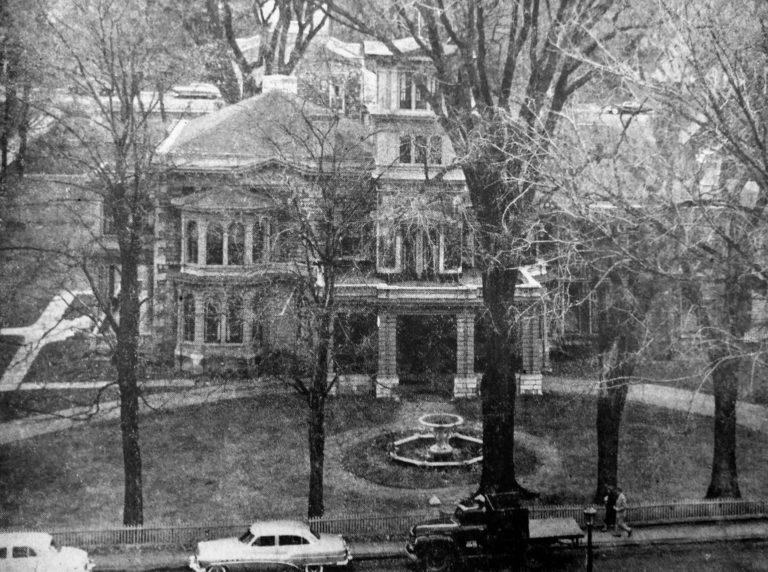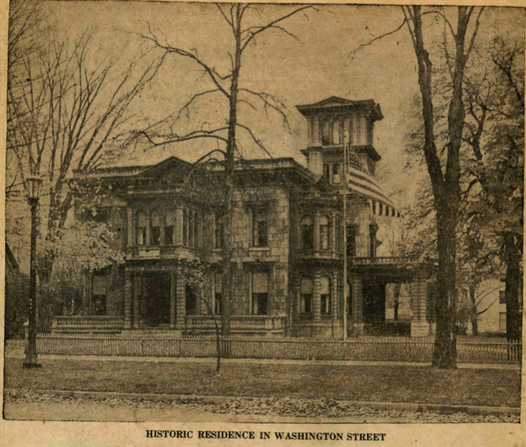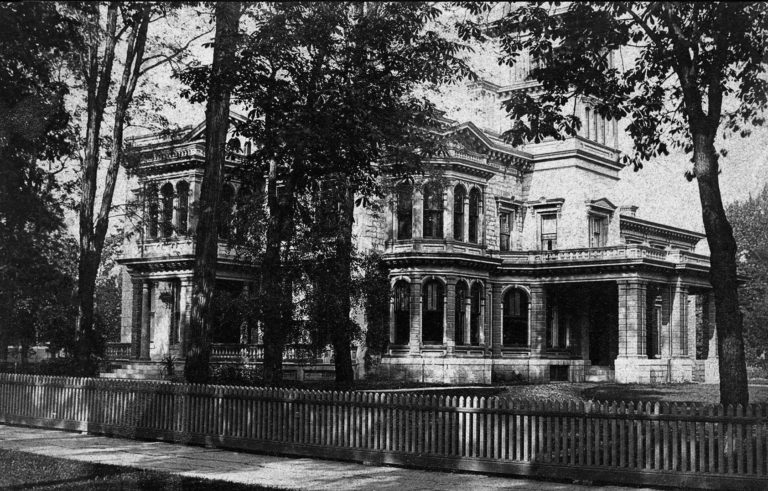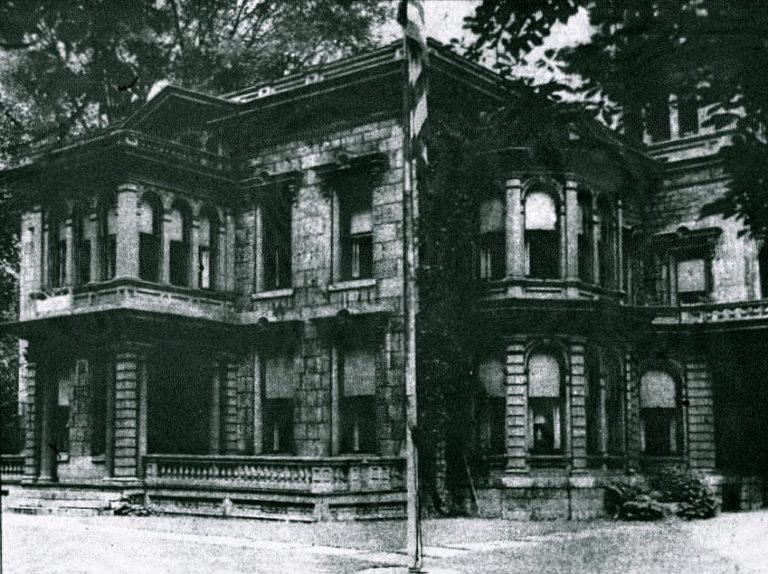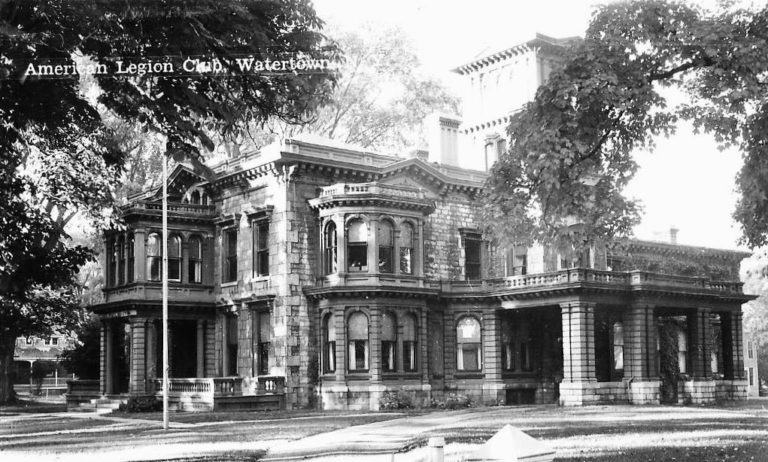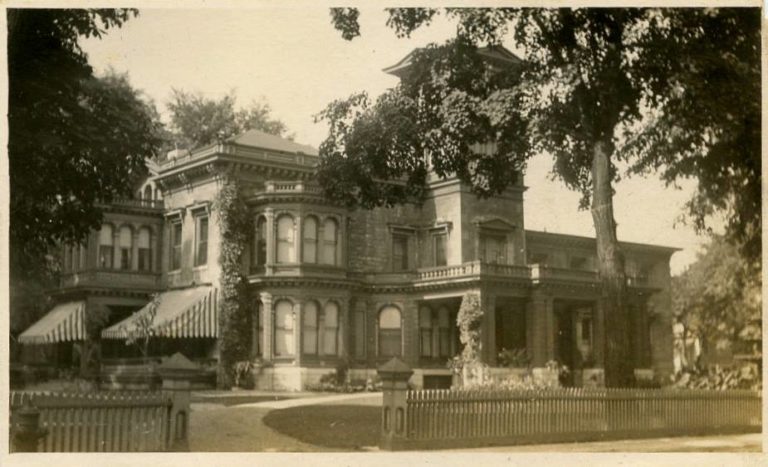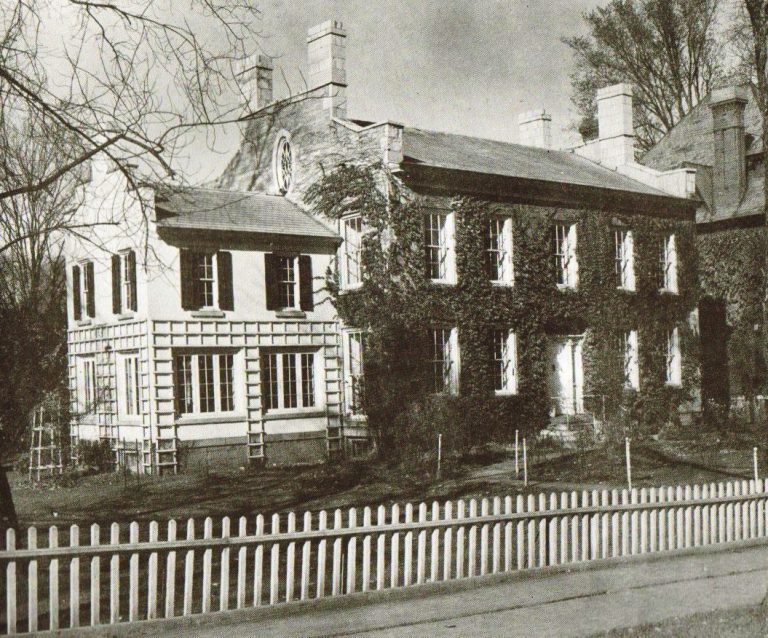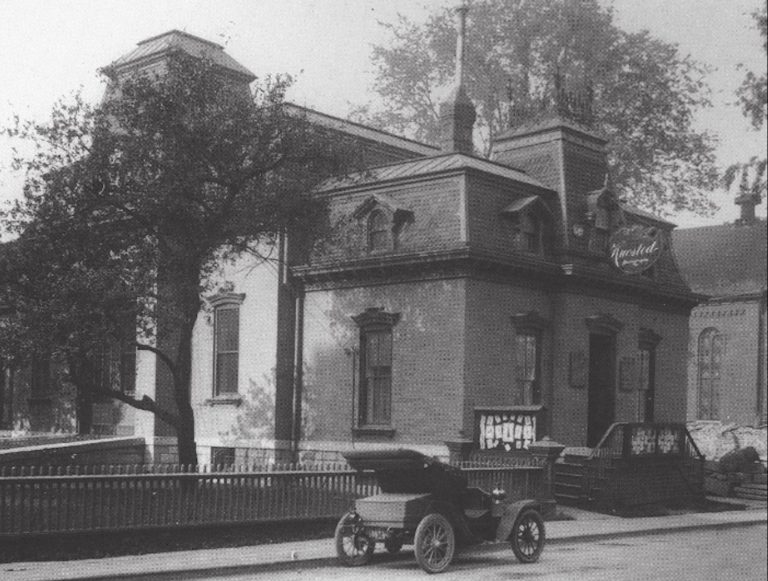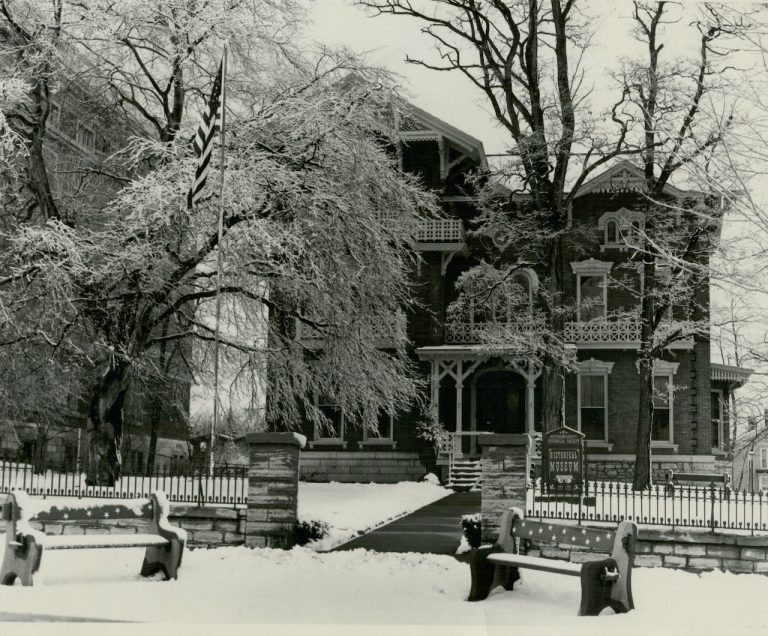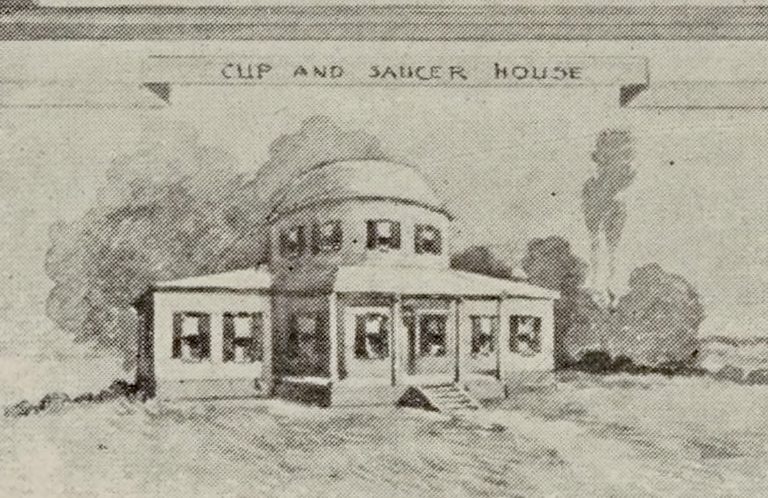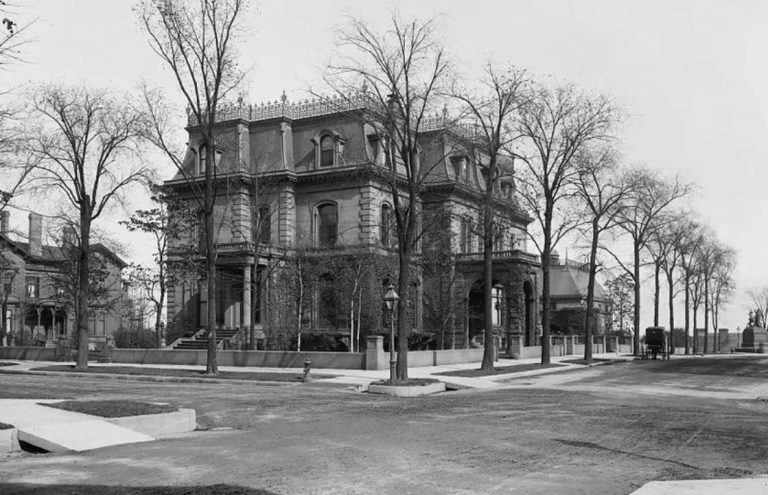Early History Of The Herring Mansion – Built Circa 1820-1824
Made of limestone from the local area, what is most commonly referred to as the Herring Mansion was originally home to one of Watertown’s earliest merchants, Olney Pearce. The mansion, as shown further below from several decades later, was not quite the one of grandeur that most will recall before it was demolished in 1960 as will be explained momentarily.
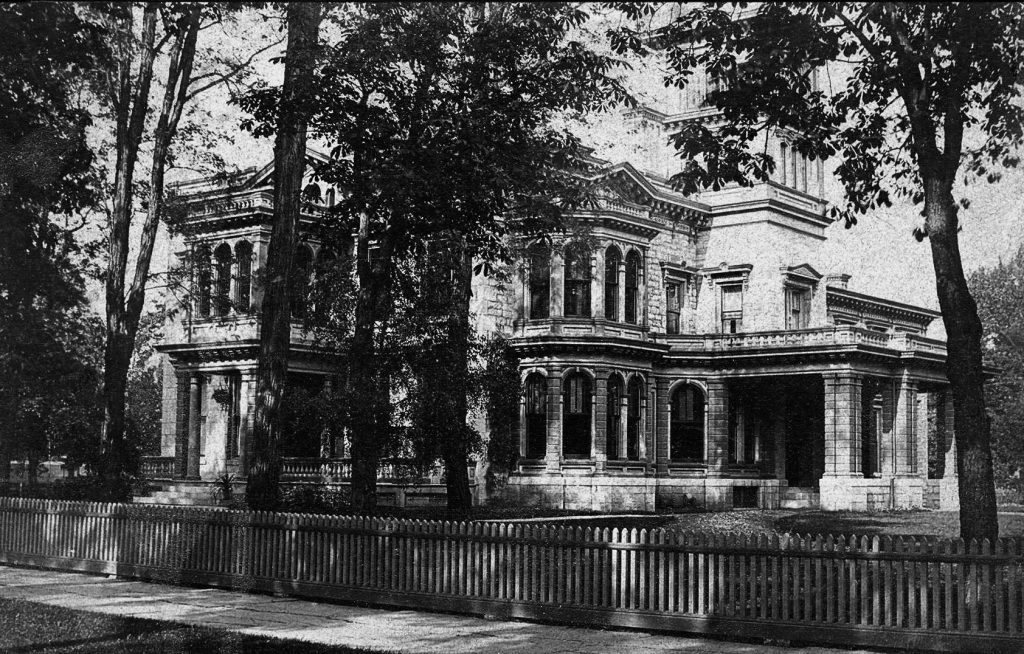
The Herring mansion would change hands over the next few decades, belonging to Colonel Zebulon H. Benton, a mine operator and married to Joseph Bonaparte’s daughter, Charlotte Caroline, and General William H. Angell, a banker in the region.
In the 1860s and 1870s, George Foster Paddock, head of the George F. Paddock & Co. Bank, owned and occupied the mansion. At this point in time, considered the start of the Gilded Age, when extravagant mansions were designed, George Paddock had received $1,000,000 from his father, Loveland Paddock. The mansion that George Paddock would ultimately move into looked like the photo below.
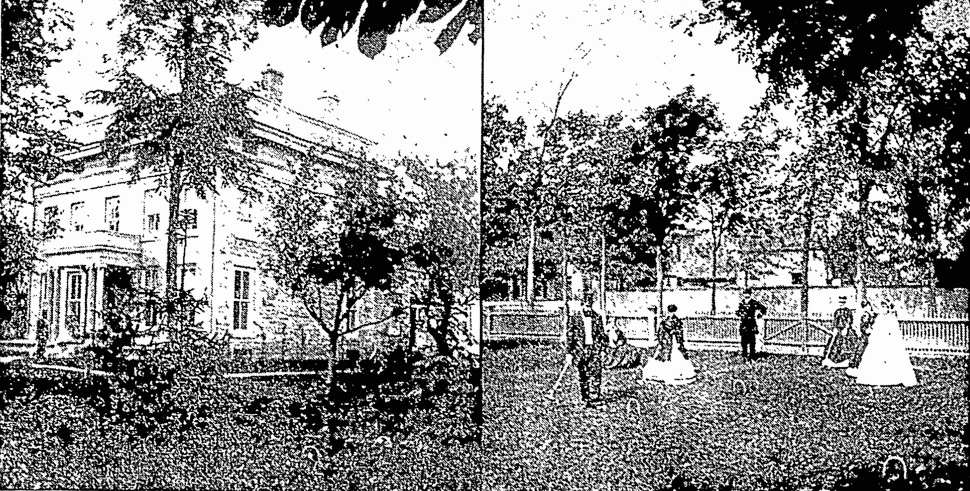
According to David Lane’s article in the July 12, 1941 Watertown Daily Times–
It was George F. Paddock who greatly expanded and “improved” the house, adding the two-story bay windows on the front of the north side, the porte cochère on the same side and otherwise increased the capacity of the mansion, which now has a total of 22 or 23 rooms.
Plans were also made for a new carriage house, “which will be in keeping with the fine residence on the place,” the Times would later report. Since that point, it has “been looked upon as among the finest and most picturesque residences on the street, if not the county.”
Unfortunately, George Paddock’s speculations into various businesses and markets would leave him bankrupt and struggling for much of his life. He would move to Chicago, and his life seemed to be in a downward spiral, but his family would offer no more than a steady allowance for him to live on.
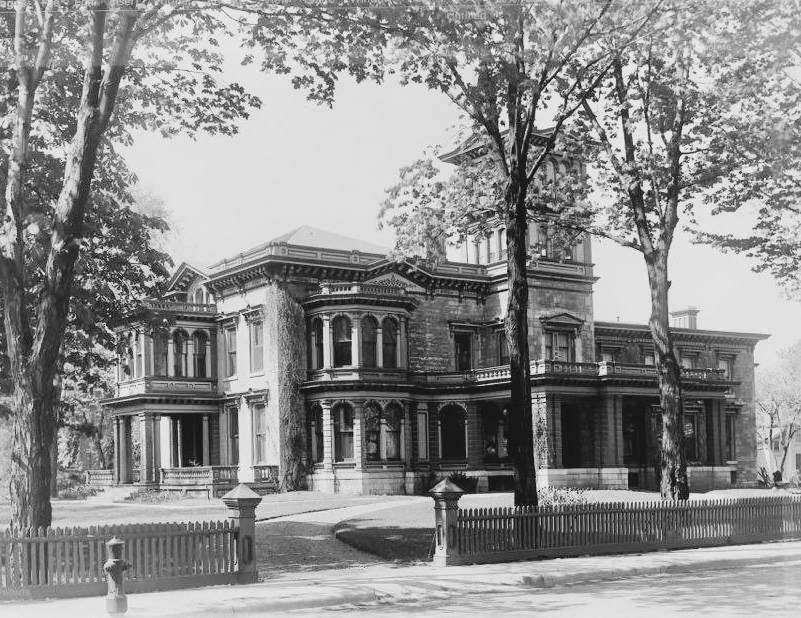
The Herring Mansion Era And Eventual Sale To U.S. Government U.S.O.
According to David Lane–
Paddock’s assignees took the house, ultimately selling it to the First National Bank of Watertown which disposed of it to Uriah Lott of Corpus Christi, Tex., for $17,000. Lott conveyed it to the Jefferson County Savings Bank for $12,000 and the next year, 1885, it was purchased from the bank by Colonel William P. Herring, tanner, paper manufacturer, founder of Herrings village, between this city and Carthage, and father of Mrs. Pauline Dillenback. Colonel Herring died in 1915, leaving the property to his widow, who, upon her death, willed it to her daughter.
It should be noted that some of this information contradicts information from the Watertown Daily Times. In a 1910 25-year-ago segment, it was noted that Lott sold the mansion directly to Herring for $36,000, including property and furniture. This would make more sense, for Lott would have incurred a $5,000 loss per Lane’s article (though in all fairness and defense, Lane didn’t have the internet back then).
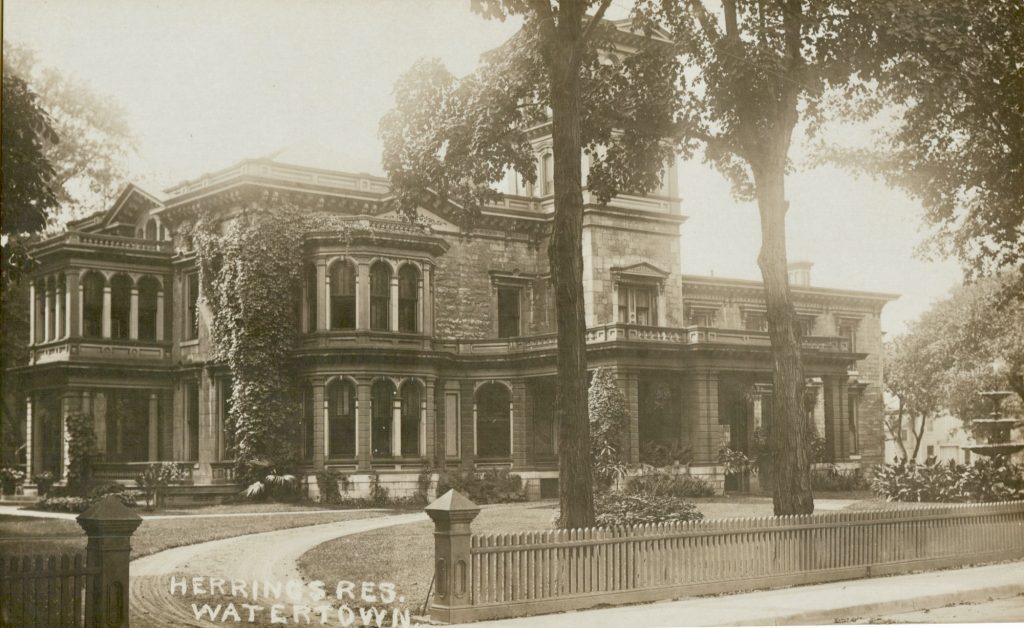
In 1941, Mrs. Pauline Dillenback would sell the property to the United Service Organization (U.S.O.) for $40,000 despite being assessed for $70,000. The mansion, to be used as a recreation center for troops stationed at Madison Barracks and Pine Camp, was said to have been the favored of 15 sites inspected and Mrs. Pauline Dillenback would accept a lesser sum than its assessment for willingness to do something for the soldiers.
Mrs. Pauline Dillenback would purchase the former Roswell Flower Taylor residence at 244 Clinton Street, opposite the large brownstone Emma Taylor Flower mansion. The 244 Clinton address was constructed in 1929 by Roswell Flower Taylor. Roswell, one of the two sons of Emma Flower Taylor and J. B. Taylor, would live there for a few years and move into his mother’s mansion on S. Massey Street after her death.
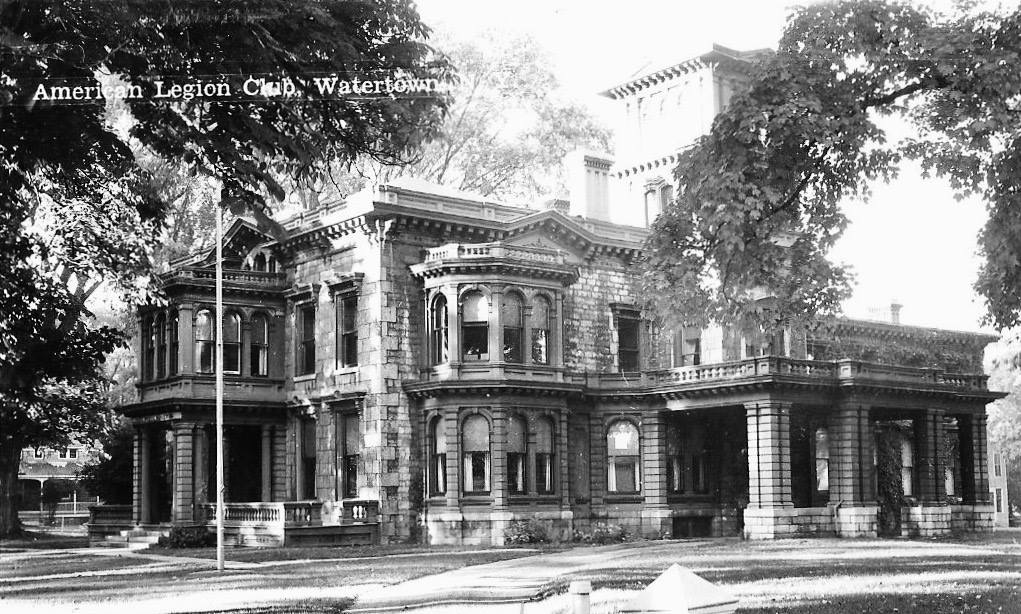
American Legion And The Beginning Of The End For The Herring Mansion
Four short years later, the U.S. Government sold the property to the local Watertown Army and Navy Post for $35,000. It would remain as the American Legion until the 1950s when local developer J.J. Capone brokered a deal to move the Legion to Sterling Street at the site of the former Watertown High School in order to build a hotel.
As reported in the Watertown Daily Times on June 4, 1958–
Members of the Army and Navy Post 61, American Legion, voted Tuesday evening by more than a two-thirds majority at a special meeting to accept the offer of J. J. Capone for the purchase of the post’s clubhouse property at 312 Washington Street in exchange for a new clubhouse on the Sterling street site of the old Watertown High School and $10,000 in cash.
The 188 members who attended the two and a half-hour meeting in the Legion’s recreation hall voted to reject the offer of the Watertown Savings bank which called for an outright sale for $200,000.
Mr. Capone was not available for comment. It is understood that Mr. Capone wants to build a modern motel and restaurant on the Washington Street site which adjoins the former Orville Hungerford residence at 336 Washington, purchased by Mr. Capone in July, 1957.
That hotel, the Carriage House Inn, would become the Holiday Inn Carriage House, now known as Best Western Watertown—Fort Drum.
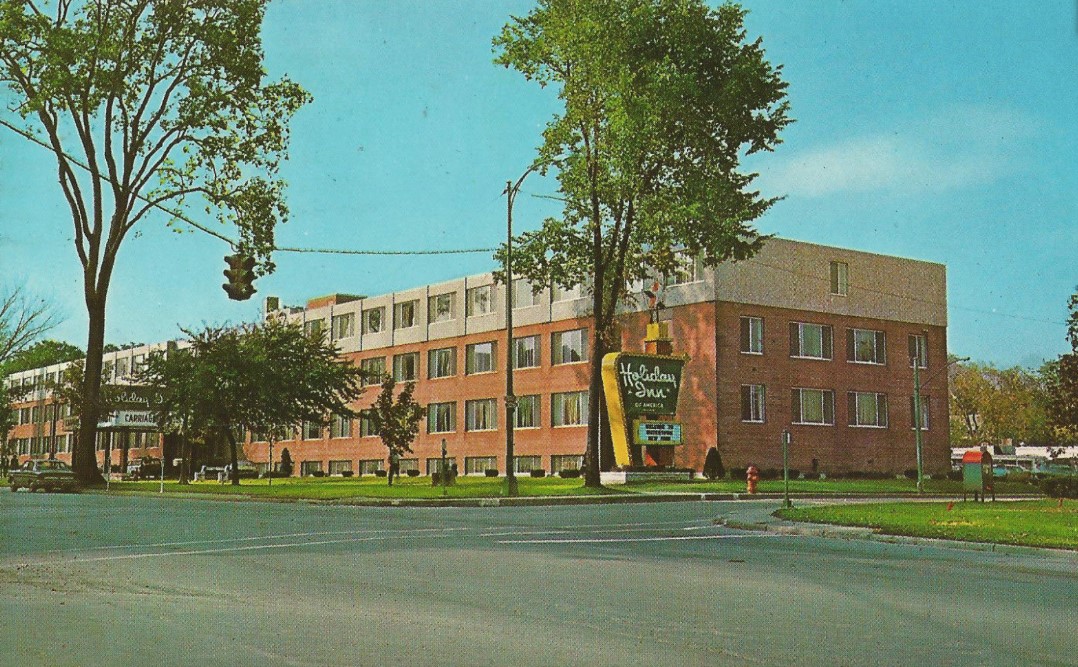

Governor Rockefeller and his wife, Nancy, were in town for the dedication of the new American Legion. Later, during a tour of the city, Mrs. Rockefeller spotted the large Herring Mansion’s water fountain, which was in the midst of demolition.
J. J. Capone offered to donate it to the Rockefellers, who, unable to accept donations, purchased it for $40 and had it repaired, restored, and placed at the Executive mansion in Albany.
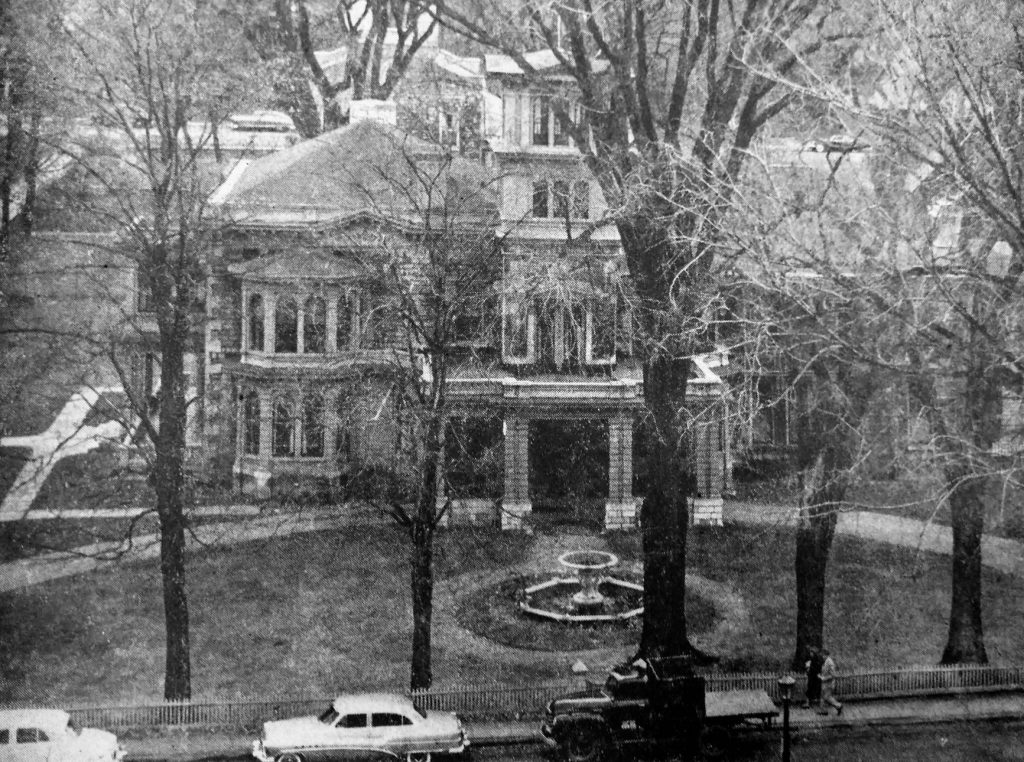
Last but not least, the carriage house added to the Herring Mansion estate during the Paddock years is still there as Savory Downtown, a local restaurant and banquet hall operating as part of Best Western Watertown – Fort Drum.

